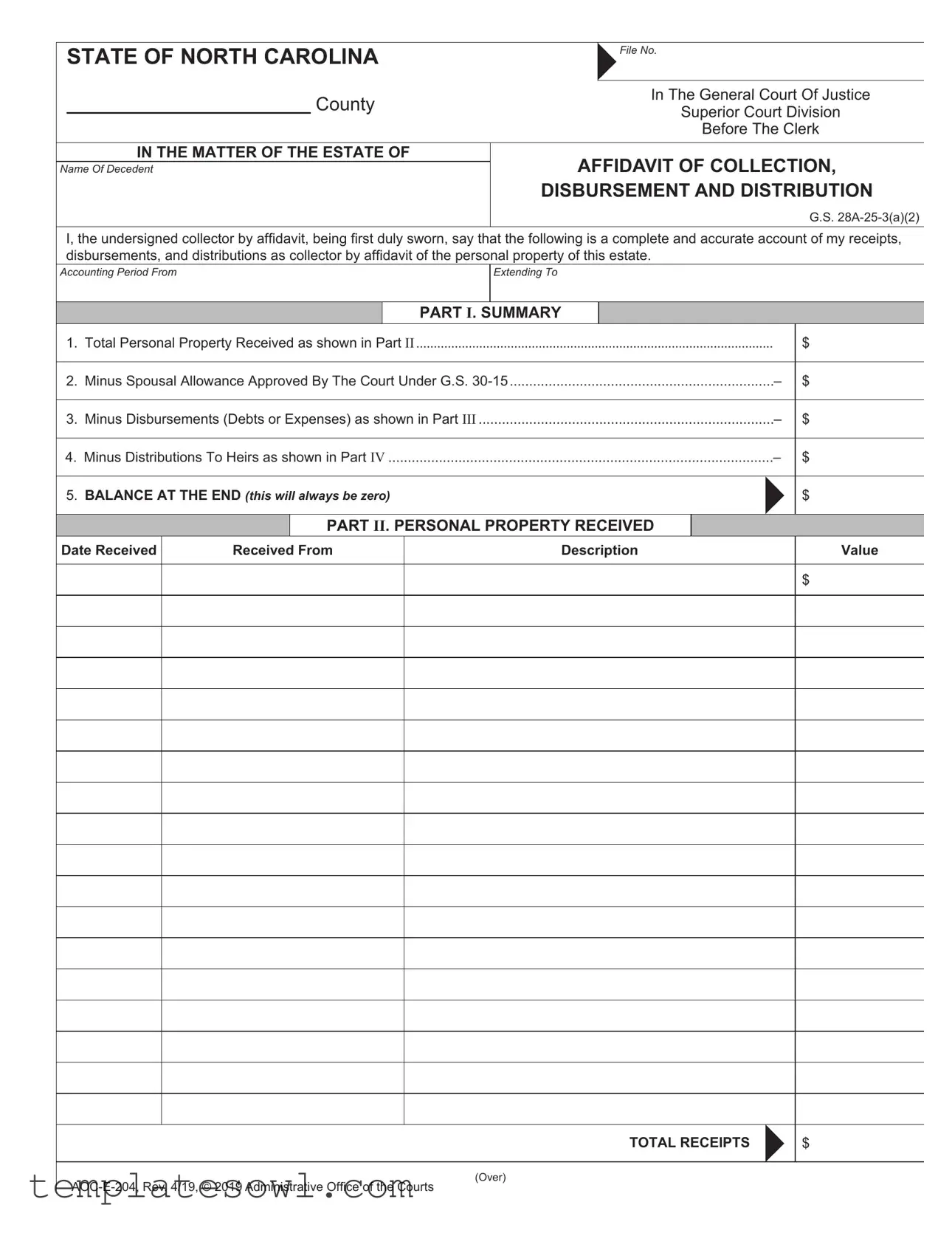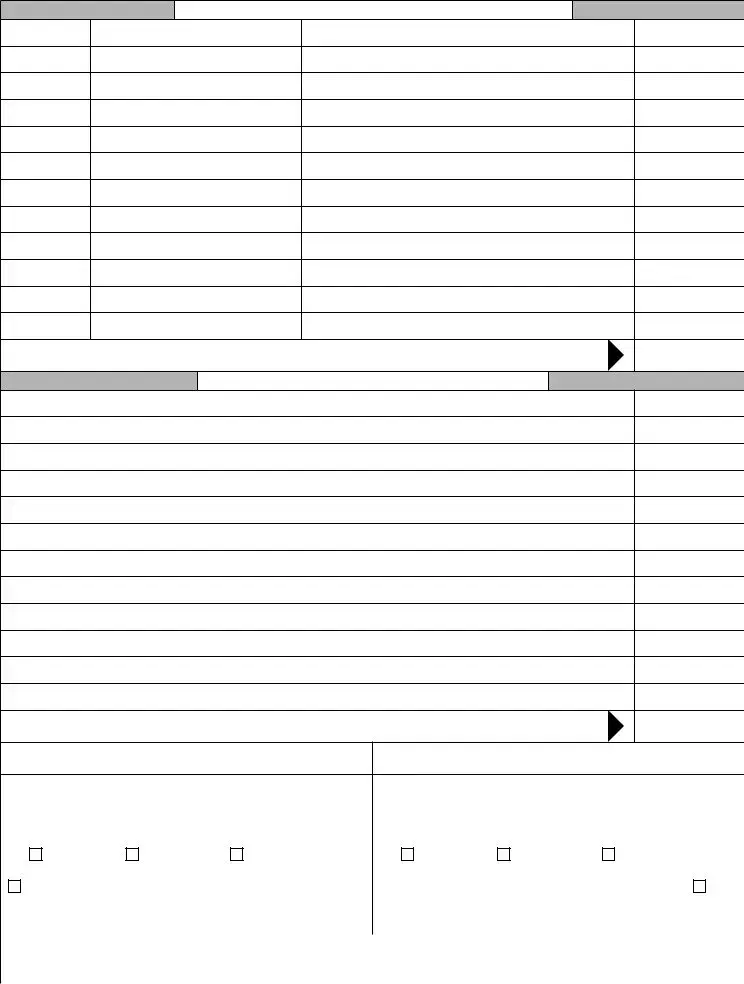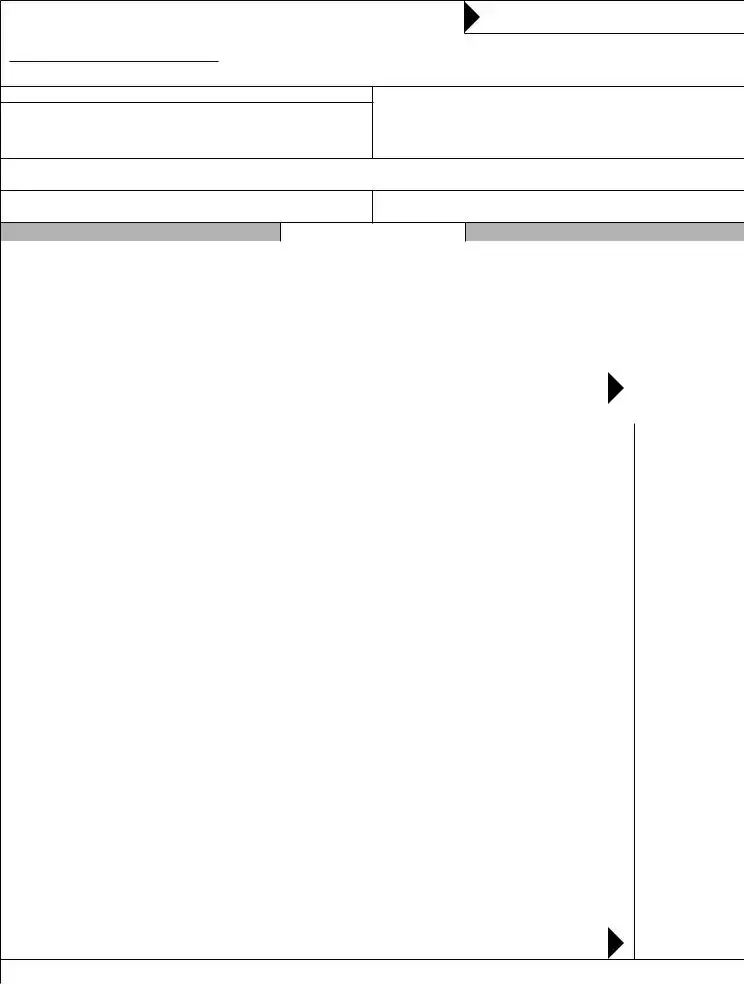Filling out the AOC E 204 form correctly is essential for ensuring smooth processing in the collection, disbursement, and distribution of the estate. However, many individuals make common mistakes that can lead to delays or complications. One frequent error is failing to provide complete information. Each section of the form requires specific details, and missing data can cause the form to be returned or denied.
Another common mistake is incorrectly calculating totals. The balance at the end of the form should always equal zero, and errors in summation can indicate inaccuracies elsewhere. It is vital to carefully check all calculations in Part I, Part II, Part III, and Part IV.
People often overlook the signatures required on the document. Both affiants must sign and date the form, and if there are multiple affiants, their signatures must also appear in the designated sections. Omitting a signature can lead to processing delays.
Not providing proper documentation for all received personal property is another mistake. Each entry in Part II must include a description and value. Skipping a detailed account can raise questions about the assets of the estate and may delay approval.
Additionally, some persons do not account for spousal allowances correctly, which are subtracted in Part I. Understanding which allowances apply under G.S. 30-15 requires thorough knowledge and can be easily miscalculated.
Individuals often make the mistake of using outdated versions of the form. It is crucial to ensure that the most current version, such as Rev. 4/19, is being utilized to avoid any discrepancies that may arise from outdated regulations.
Another issue arises when people neglect the notarization requirement. The signatures must be sworn or affirmed before a legally authorized individual. Failure to have the document properly notarized can invalidate the submission altogether.
One last common mistake involves inaccurate or incomplete records of disbursements and distributions. Every entry made in Part III and Part IV must be backed by accurate records to support the claims being made. Insufficient records can lead to questions or challenges to the account provided.
Addressing these mistakes proactively can ensure that the AOC E 204 form is completed accurately, facilitating a more efficient process in the management of the estate.


